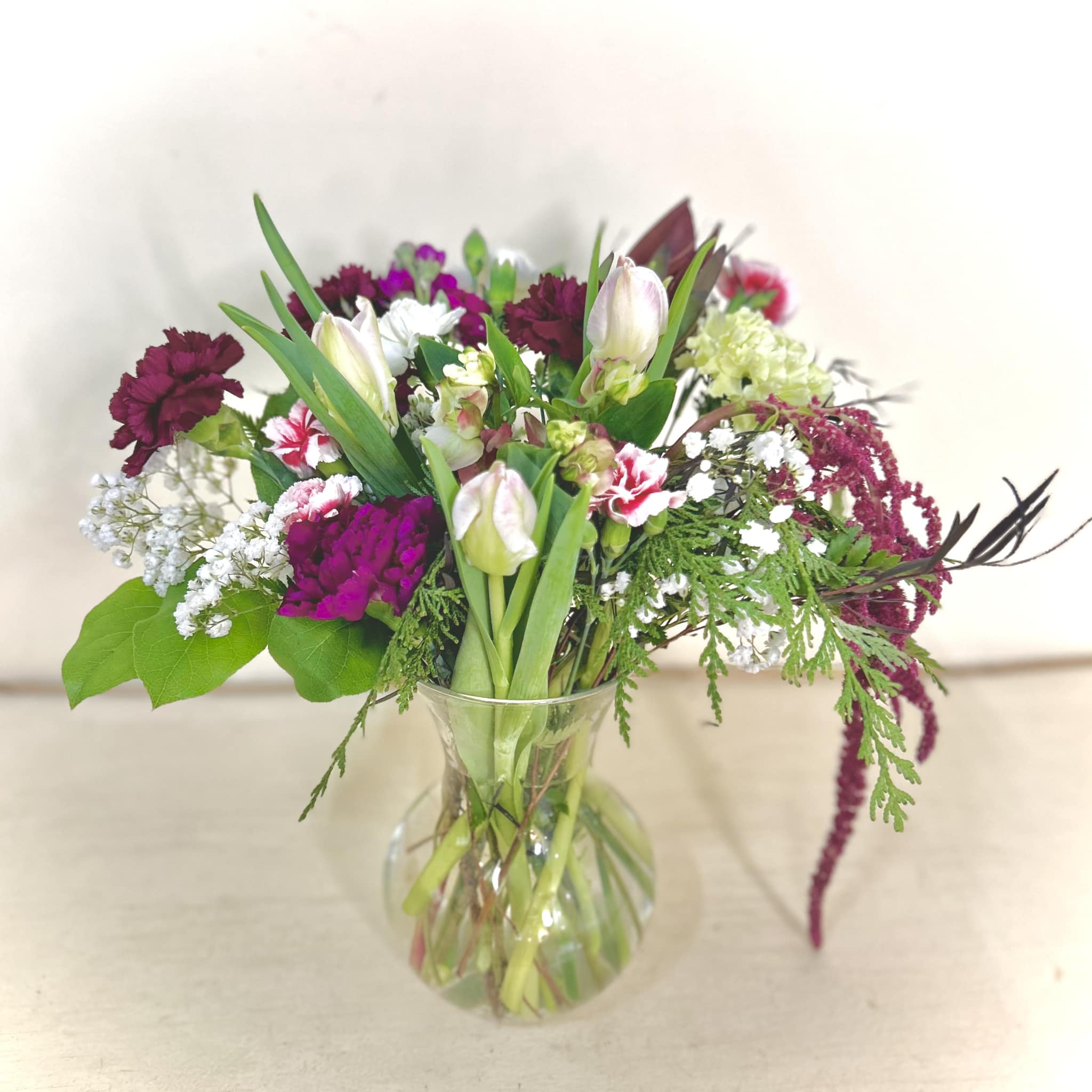
The Art of Floral Design: Tips and Techniques from The Dailey Daisy Oct 01, 2025
To begin your journey into floral design, it's important to understand the basics. Start by selecting a theme or purpose for your arrangement. Are you designing a centerpiece for a dinner party, a bouquet for a special occasion, or simply a decoration to brighten up your home? Defining your goal will guide your choice of flowers, colors, and design elements.
When selecting flowers, consider factors such as seasonality, color palette, and the symbolism associated with different blooms. At The Dailey Daisy, we recommend choosing a mix of focal flowers, secondary blooms, and fillers to create depth and variety. Focal flowers like roses, lilies, or sunflowers draw the eye and set the tone for your arrangement, while secondary blooms and fillers like baby's breath or eucalyptus add texture and fullness.
The choice of vase or container is equally important. The vessel should complement the flowers and fit the occasion. For a sleek, modern look, consider angular or glass vases. Rustic or homey arrangements might benefit from ceramic or wooden containers. Ensure your chosen vessel is clean and proportionate to the flower stems to provide a stable base.
Once your materials are prepared, it's time to assemble your arrangement. Start by trimming the stems at an angle with clean, sharp scissors or a knife. This helps the flowers absorb water more efficiently, extending their lifespan. A general rule of thumb at The Dailey Daisy is to remove any leaves or thorns below the waterline to prevent bacterial growth.
Begin arranging by creating a framework using your filler and greenery. This structural base will hold the focal flowers in place. Add your focal flowers next, positioning them evenly and making sure they have room to breathe and be noticed. Finally, add your secondary flowers as accents, distributing them evenly to maintain balance and harmony.
Color theory is an essential element of floral design. Complementary colors like blue and orange or red and green create vibrant contrasts, while analogous colors, found next to each other on the color wheel, provide a more harmonious look. Remember to balance warm and cool tones to suit the environment and mood you wish to create.
It’s also worth considering the principles of proportion and scale in your design. Your arrangement should complement the size of its space, with larger arrangements suited for big rooms or centers of attention and smaller arrangements perfect for intimate settings.
Conclusively, boosting the lifespan of your flowers is as essential as the design itself. Change the water every couple of days, recut the stems regularly, and keep the arrangement away from direct sunlight and heat sources.
With these tips and techniques from The Dailey Daisy, you can venture into the rewarding world of floral design. By practicing these core principles, you’ll learn to create arrangements that reflect your personal touch and bring beauty into any setting. Whether designing for an event or simply enjoying a creative hobby, the art of floral design is both fulfilling and transformative. Explore, experiment, and most importantly, have fun with the endless possibilities of floral artistry.
/filters:no_upscale()/filters:format(webp)/media/829bb275-eadb-4439-b966-697a5f625d2d.jpeg)